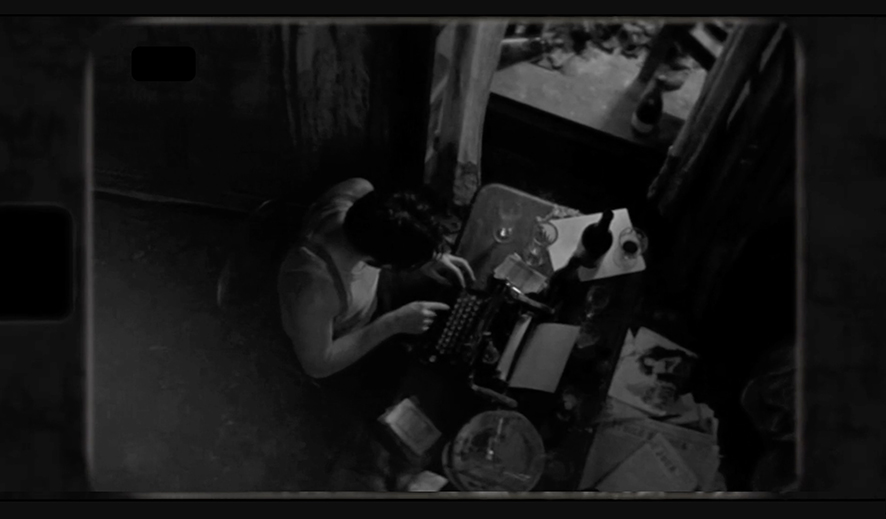UNIT 1: BRIEF 3: WEEK 7
Methods of Translation: Final Presentation
Looking at placing Moulin Rouge in the era that it was created is what I experimented with in my final week of Methods of Translating.
I investigated the era by taking a clip from
1 hour and 8 minutes in and removing a 1:00 minute clip (as time doesn’t work up to 99) for the era 1899 when the film was set. I made the clip black and white and put a silent movie era effect on it. I created seven iterations of the same clip in different ways to explore this method of translation:
1. No sound or subtitles
2. No sound, but inter-title cards as the silent movies of
the time with the script on
3. French subtitles as it is set in Paris
4. A running commentary of what is happening without
sound or script
5. Speeded up to 18.99% of the original
6. Slowed down. To stop this getting too long I took 18.99
seconds of the clip and increased its length by 2x 189.9
7. Reduced the frame down to 18.99%
8. Enlarged the frame by 189.9%
Outcomes and Reflection:
I liked the ‘no sound, no subtitles’ the best. The form had affected the content. I felt that without sound and without subtitles you really felt the emotions of the actors much more as there was nothing to distract you. The shortened form of it as a clip affected the meaning as well as the context had changed, your focus is much stronger than when its in colour and part of its wider context of the film which is quite fast paced, erratic, full of songs and music. Isolated you can see the detail and beauty in the filming, that is missed when it is in its wider context, and instead of your brain trying to follow the plot, hear the words, decode the soundtrack, you just look and feel what is being communicated. Through the alteration of the form to black and white, further stripped out all the ‘noise’. It felt personal and raw. It felt more like a Hitchcock film, which is maybe interesting to investigate further. It felt relaxing to watch, although emotional, which draws my attention back to its original form and why it is colour, fast paced, loud. I suspect a reflection of our time and the perceived attention spans of its audience, commercial value, to be ‘modern’, to be a huge cinematic hit, to make lots of money.
The Silent Movie version reconfigured the meaning back to a story. The inter-titles forced you to read the content in the prescribed way that, left little to the imagination other then processing the story, and a mild panic to ‘keep up’ and ‘not miss anything’. This reminds me of Patrick Keillers London from where form is used to perpetuate meaning. This also reminds me of social media and our current ‘mode of living’ where everything is consumed quickly without thought or digestion.
I liked the micro version, I felt the framing of the content was heightened, which I enjoyed. I’m not sure it had a huge effect on meaning, other than to highlight the visual beauty, to me, although can that be meaning? It is of value.
The pre-process (process) of this method uncovered a cycle of patriarchy, misrepresentation and capitalism. The founders of the Moulin Rouge being white middle class men, looking to capitalise on consumerism. The director of the film is a white male, perpetuating gender misrepresentation through the film and capitalism (it grossed £179.2 million at the box office alone). The stage show was written by white men continuing this cycle. 124 years and we are still re-cycling the same cycle. This draws clear correlations with our XY.C Workshop on Publishing where through re-publishing an image from Jeremy Sandford’s book Down and Out Britain criticising the Welfare State, we found similar problems now, 52 years later.
When I looked it up on the Bechdel Test, who’s criteria is
1. It has to have at least two [named] women in it
2. Who talk to each other
3. About something besides a man
I am surprised to see it passes. Through my methods of graphic communication design I find overwhelming misrepresentation of women. But on further investigation to how it passed the comments illustrated how difficult it was to find an example of “two named women talking to each other about something besides a man” with just two scenes (one which is disputed) in the whole 2 hour and 7 minute film!
Disputed scene 1:
Michelle said:
I can remember the showgirls exchanging some snide remarks backstage. I can’t specifically remember any other instances where it passes all three tests. Though it’s been a while since I’ve watched it.
Leah said:
The showgirls are not all named, and their snide remarks are about sleeping with the Duke. It pains me to admit because this is my favorite movie, but it fails the test.
Scene 2:
Jessica said:
I think this movie actually passes. There is a scene early one where Sateen and Marie are speaking about Satine’s dreams of becoming a stage actress while she is trying on the red dress for the first time. Marie tells her that she’ll be “lighting up the great stages of Europe” and Satine asks “do you think I could really be like the great Sarah?”.
Heartening that its women discussing this and the only man present is ‘Neil’ who amends the rating accordingly.
neil (webmaster) said:
I’ve updated the rating from 3/3 to 2/3.
Although now I realise he is the ‘webmaster’ and therefore the power immediately switches back to a male gatekeeper.
https://bechdeltest.com/view/1769/moulin_rouge!/
This is depressing.
I find my focus drifting back to the cycles of narrative and misrepresentation when looking at this investigation in the context of my combined investigation
